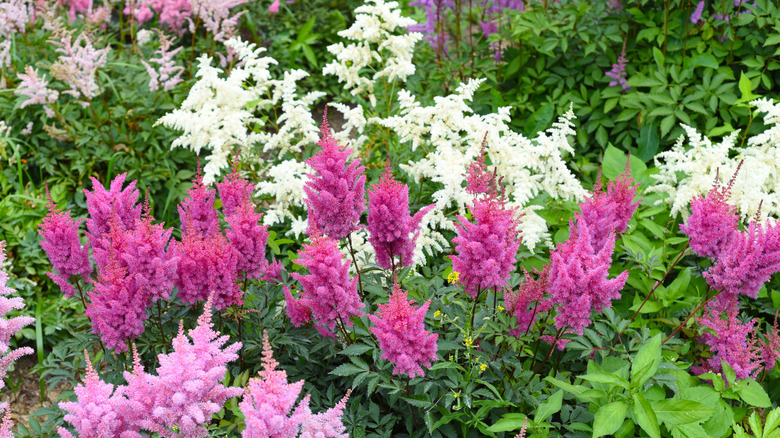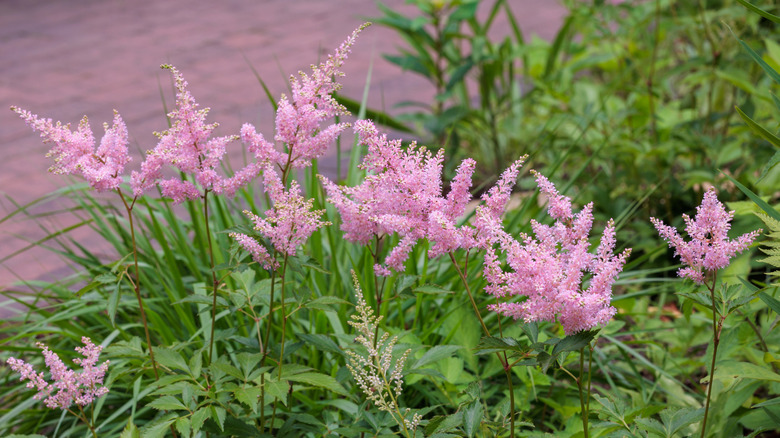Fill In Landscaping On A Budget With Popular Garden Astilbes
You can create a beautiful, budget-friendly garden by using the resources you already have at hand without spending a small fortune for new plants. Dividing and transplanting popular perennials like astilbe is a simple way to turn a single plant into multiple smaller plants. This striking flower with tall, colorful plumes and fern-like foliage blooms in colors ranging from shades of pink to white, lavender, and red. If you're hankering to grow astilbe but you're starting with a blank slate, check out organized plant swaps with other gardeners in your community or ask a neighbor if they'd care to share.
Astilbe, hardy in USDA zones 3 to 9, blooms in spring and summer. Most of the astilbe varieties are natives of Asia, though one, Appalachian false goatsbeard (Astilbe biternata), is native to North America. The plants, also called false spirea, thrive in partial to full shade and need a regular watering schedule to keep the soil moist, and they require extra watering when it's very hot. The shortest astilbe hybrids can be less than a foot tall while the tallest reach over three feet high. With their varying hues, heights, and bloom times, planting a variety of gorgeous astilbes brings dramatic color to your shade garden. Or, pair astilbe with other fast-growing perennials to turn your yard into a pollinator haven.
How to propagate astilbe for your budget landscape
Clumps of astilbe should be divided in early spring or fall, and even if you're not propagating the plants to create more, they need to be divided every three or four years to keep them healthy. Dividing the plants in the spring has advantages. It's easier to see the root ball — the smaller foliage doesn't get in the way — and the new plants fill in more readily. If you choose to divide astilbe in the fall, add a 4 to 6 inch layer of straw over the new plants to protect them from winter freezes. You'll know your transplantation was successful if the foliage returns in the spring, but the new plants may not bloom well the first year.
Since you'll be planting the new astilbe immediately after dividing them, make sure their spot in the garden is ready before you begin. Working in some budget-friendly DIY compost helps the new plants get a good start. Dig up the entire root ball of the plant you're dividing. Use a sharp, clean knife to separate sections of the root ball, making sure that each section has some root and several shoots. Replant the sections in their new location, cover with mulch, and water regularly during the plant's first growing season. Larger clumps may establish themselves more quickly, but smaller clumps may produce more new plants. If you can't replant the divisions immediately, put them in a container in a shady spot and keep the root ball moist. If they're out of the ground for too long, they'll die.

